Search
- Page Path
-
- HOME
- Search
- Review Article
- Critical Care Medicine
- Ferritin in pediatric critical illness: a scoping review
- Ivy Cerelia Valerie, Anak Agung Sagung Mirah Prabandari, Dyah Kanya Wati
- Clin Exp Pediatr. 2023;66(3):98-109. Published online September 16, 2022
-

The number of studies on ferritin predictive ability in pediatric critical illness has grown exponentially over the past 2 decades. However, among the 66 of 1,580 studies analyzed here, summary statistics for overall and condition-specific studies were only reported in 45.4% and 71.2%, respectively. In contrast, ferritin as a categorical variable with a preset threshold was a significant predictor in 84.6% of studies.
- Infection
- Therapeutics for the treatment of coronavirus disease 2019 in children and adolescents
- Soo-Han Choi, Jae Hong Choi, Ki Wook Yun
- Clin Exp Pediatr. 2022;65(8):377-386. Published online June 27, 2022
-
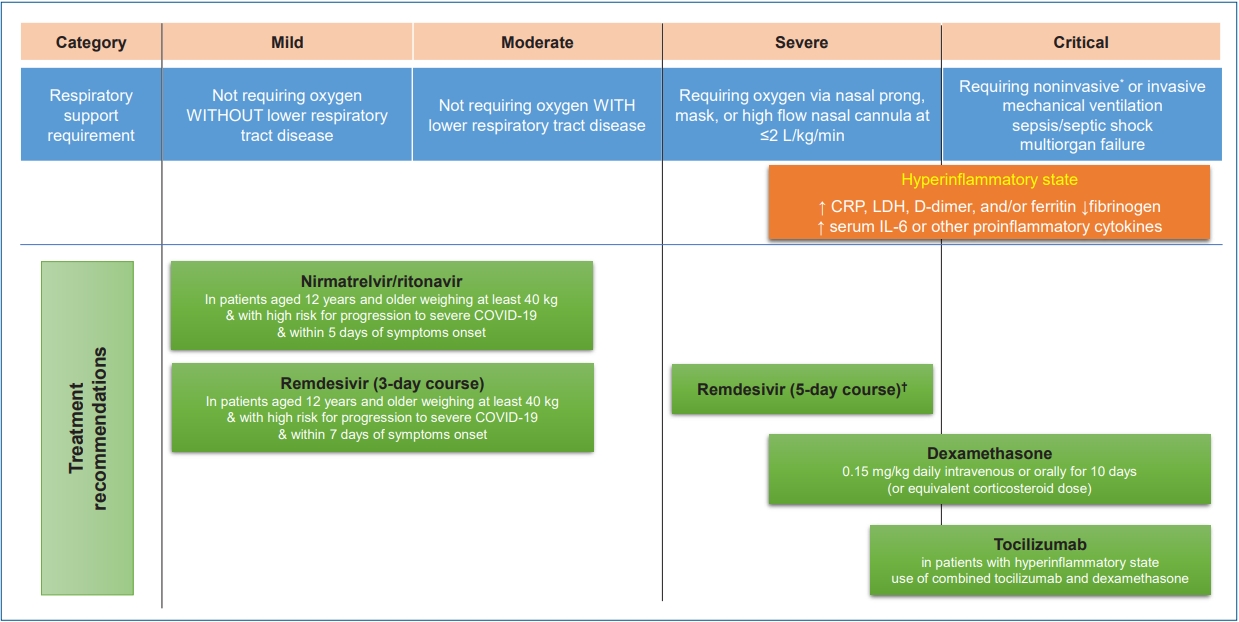
· Children and adolescents with high risks for severe coronavirus disease 2019 (COVID-19) should be identified and proper treatment should be provided promptly according to the patient’s condition.
· Remdesivir can be considered for pediatric patients of all ages with COVID-19 who have an emergent or increase in supplemental oxygen.
· The use of corticosteroids is not recommended for patients with nonsevere COVID-19. Corticosteroids are recommended in children and adolescents with severe and critical COVID-19.
- Neurobehavior
- Jeopardized mental health of children and adolescents in coronavirus disease 2019 pandemic
- Bohyun Jin, Sohee Lee, Un Sun Chung
- Clin Exp Pediatr. 2022;65(7):322-329. Published online June 3, 2022
-
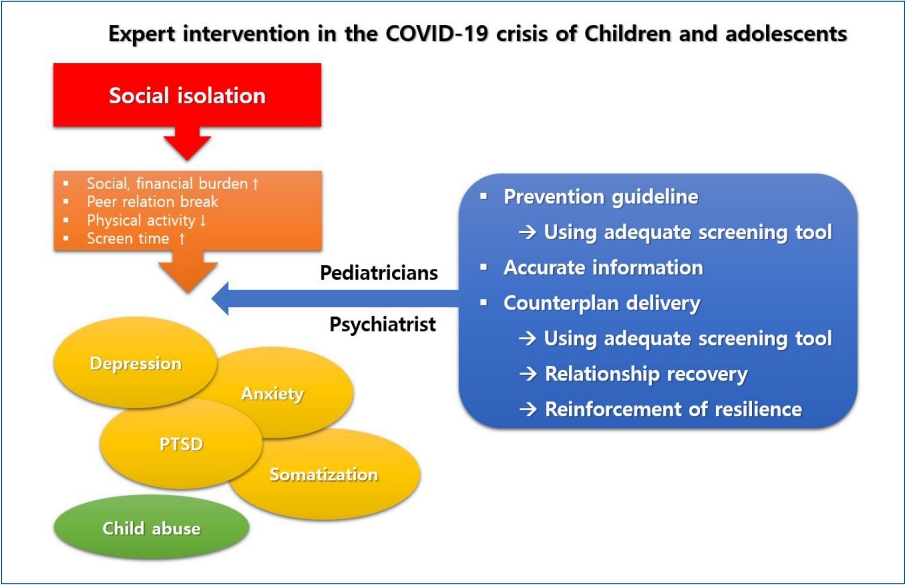
∙ The coronavirus disease 2019 (COVID-19) pandemic has required preventive measures like self-quarantine, school closures, and lockdown, which ultimately make youth directly and indirectly vulnerable to depression, anxiety, posttraumatic stress disorder, and somatization.
∙ Child abuse is more common in the COVID-19 era than previously.
∙ Pediatricians should carefully examine parental and child mental health to directly and indirectly aid their physical and mental health.
- Original Article
- Oncology
- Treatment outcomes of high-dose chemotherapy plus stem cell rescue in high-risk neuroblastoma patients in Thailand
- Kunanya Suwannaying, Piti Techavichit, Patcharee Komvilaisak, Napat Laoaroon, Nattee Narkbunnam, Kleebsabai Sanpakit, Kanhatai Chiengthong, Thirachit Chotsampancharoen, Lalita Sathitsamitphong, Chalongpon Santong, Panya Seksarn, Suradej Hongeng, Surapon Wiangnon
- Clin Exp Pediatr. 2022;65(9):453-458. Published online May 24, 2022
-

Question: This study aimed to elucidate the outcomes of high-risk neuroblastoma (HR-NB) patients treated with high-dose chemotherapy and stem cell rescue without immunotherapy.
Finding: The 5-year overall survival and event-free survival rates were 45.1% and 40.4%, respectively.
Meaning: High-dose chemotherapy plus stem cell rescue followed by cis-retinoic acid for 12 months is well tolerated and could improve survival in patients with HR-NB in limited resource settings.
- Neonatology (Perinatology)
- Neonatal sepsis-causing bacterial pathogens and outcome of trends of their antimicrobial susceptibility a 20-year period at a neonatal intensive care unit
- Woo Sun Song, Hye Won Park, Moon Youn Oh, Jae Young Jo, Chae Young Kim, Jung Ju Lee, Euiseok Jung, Byong Sop Lee, Ki-Soo Kim, Ellen Ai-Rhan Kim
- Clin Exp Pediatr. 2022;65(7):350-357. Published online December 9, 2021
-

Question: What is prevalence of bacterial pathogens causing sepsis and their antimicrobial susceptibility over 20 years?
Finding: Coagulase-negative remains most common causative organism. The most common gram-negative organism was Klebsiella pneumonia. The susceptibility of staphylococcus aureus and K. pneumonia showed increased susceptability to oxacillin, cefotaxime and amikacin, gentamicin, respectively.
Meaning: Answers to the question asked is important in choosing antimicrobials and to monitor emergence of multidrug-resistant organisms.
- Neurology
- Neurodevelopmental outcomes and comorbidities of children with congenital muscular torticollis: evaluation using the National Health Screening Program for Infants and Children database
- Og Hyang Kim, Seung Won Lee, Eun Kyo Ha, Ju Hee Kim, Yun Hye Jo, Seongyeong Rhie, Man Yong Han, Kyu Young Chae
- Clin Exp Pediatr. 2022;65(6):312-319. Published online December 9, 2021
-

Question: What comorbidities are increased in children with congenital muscular torticollis (CMT)? Are there differences in the neurodevelopmental outcomes of children with CMT who received physical therapy versus those who did not?
Finding: The risk of congenital musculoskeletal deformities is increased in CMT. Children who did not receive physical therapy were at greater risk of neurodevelopmental delay.
Meaning: In CMT, musculoskeletal comorbidities should be identified and active early treatment provided.
- Review Article
- Infection
- Epidemiological changes in infectious diseases during the coronavirus disease 2019 pandemic in Korea: a systematic review
- Jong Gyun Ahn
- Clin Exp Pediatr. 2022;65(4):167-171. Published online November 30, 2021
-
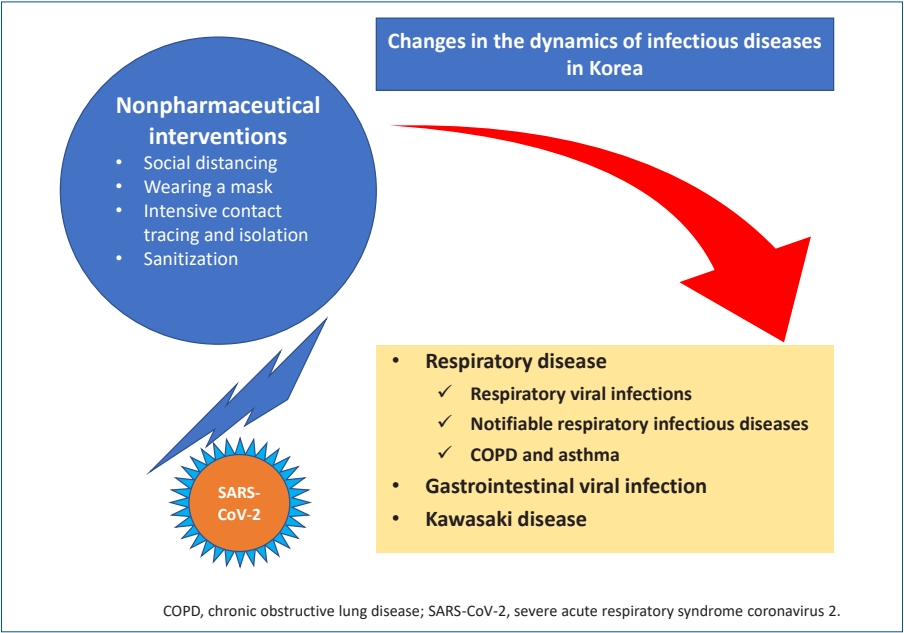
· Nonpharmaceutical interventions (NPIs) have had a major impact on the epidemiology of various infectious diseases in Korea.
· Respiratory diseases and gastrointestinal viral diseases were significantly reduced during the NPI period.
· The decrease in Kawasaki disease after the introduction of NPI is an unintended result.
· Infectious diseases that decreased during NPI use may re-emerge.
· We must continuously monitor the epidemiology of various infectious diseases during the coronavirus era
- Etiological and pathophysiological enigmas of severe coronavirus disease 2019, multisystem inflammatory syndrome in children, and Kawasaki disease
- Jung-Woo Rhim, Jin-Han Kang, Kyung-Yil Lee
- Clin Exp Pediatr. 2022;65(4):153-166. Published online November 23, 2021
-

· Severe cases of coronavirus disease, Kawasaki disease (KD), and multisystem inflammatory syndrome in children (MIS-C) share similar findings: a protracted clinical course, multiorgan involvement, and similar activated biomarkers.
· Here we propose etiological agents in KD and MIS-C as species in the microbiota and introduce a common pathogenesis through the protein-homeostasis-system hypothesis.
· Early proper dose of corticosteroids and/or intravenous immunoglobulin may help to reduce morbidity and mortality in these diseases.
- Original Article
- Endocrinology
- Effects of probiotics combined with dietary and lifestyle modification on clinical, biochemical, and radiological parameters in obese children with nonalcoholic fatty liver disease/nonalcoholic steatohepatitis: a randomized clinical trial
- Thushara Rodrigo, Samaranayake Dulani, Sumudu Nimali Seneviratne, Arjuna P. De Silva, Jerad Fernando, H. Janaka De Silva, Jayasekera , V. Pujitha Wickramasinghe
- Clin Exp Pediatr. 2022;65(6):304-311. Published online November 11, 2021
-
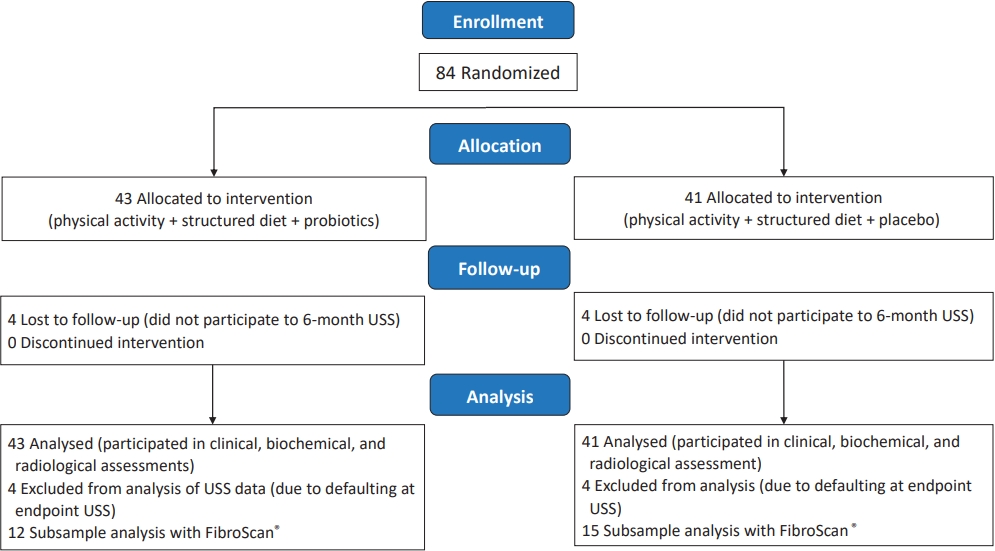
Question: Could probiotics be used as a therapeutic modality in nonalcoholic fatty liver disease/nonalcoholic steatohepatitis?
Finding: There seem no added advantages over lifestyle modifications compared to Probiotics.
Meaning: There does not seem to be an advantage of probiotics over lifestyle modifications in improving obesity-associated metabolic derangement in children.
- Review Article
- Hematology
- Thrombosis and severe acute respiratory syndrome coronavirus 2 vaccines: vaccine-induced immune thrombotic thrombocytopenia
- Young Shil Park
- Clin Exp Pediatr. 2021;64(8):400-405. Published online June 30, 2021
-

· Thrombosis and thrombocytopenia occurring within 4–28 days after severe acute respiratory syndrome coronavirus 2 vaccination require attention.
· The terms vaccine-induced immune thrombotic thrombocytopenia (VITT) and thrombosis with thrombocytopenia syndrome (TTS) are used.
· VITT is pathogenetically similar to heparin-induced thrombocytopenia.
· VITT/TTS could be associated with the development of platelet-activating anti-platelet factor 4 antibodies.
· For suspected VITT/TTS, early treatment decisions (intravenous immunoglobulin, non-heparin anticoagulant, and avoidance of platelet transfusions) are important.
- Neurology
- Cognitive outcomes in late childhood and adolescence of neonatal hypoxic-ischemic encephalopathy
- Bo Lyun Lee, Hannah C. Glass
- Clin Exp Pediatr. 2021;64(12):608-618. Published online May 24, 2021
-
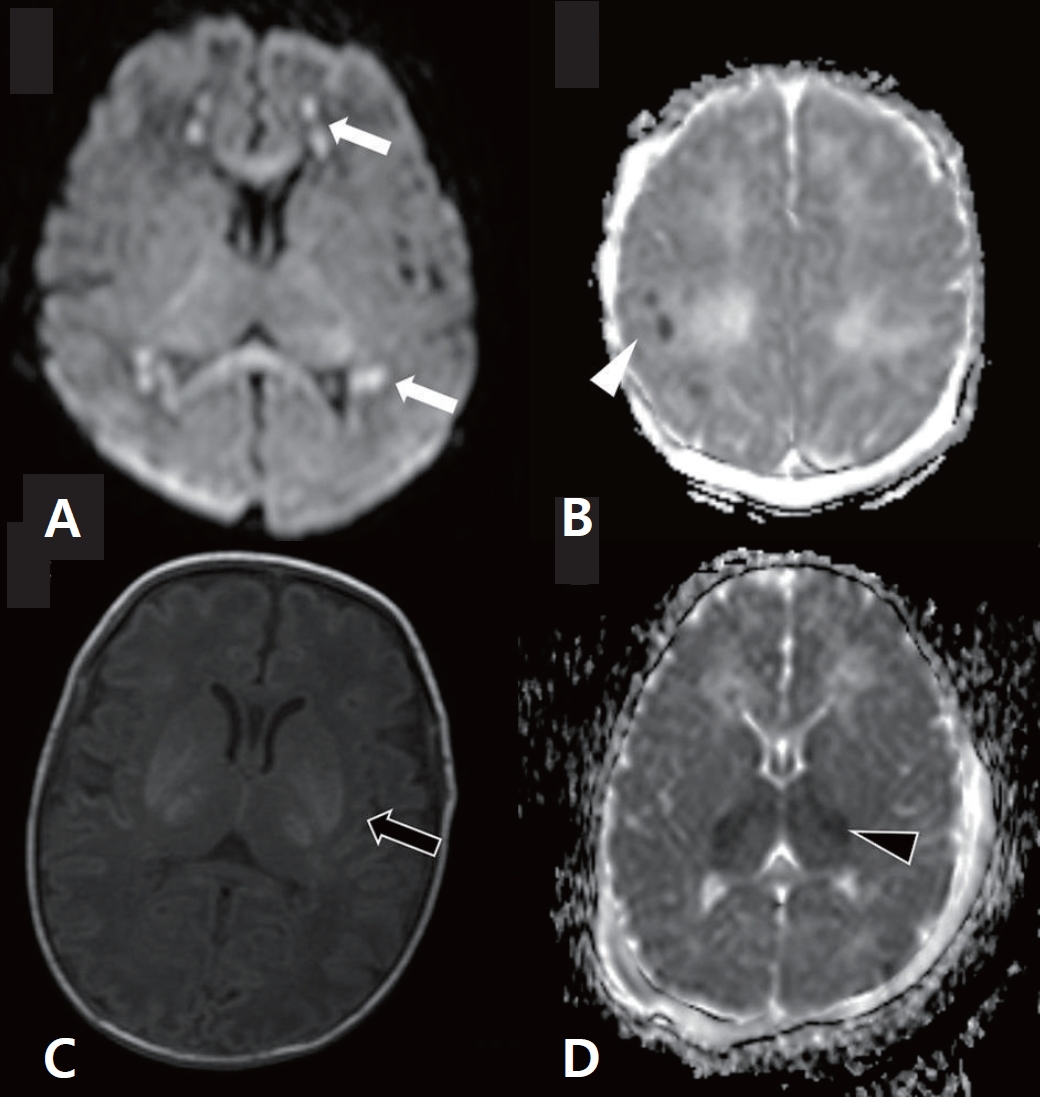
∙ Cognitive impairments occur in children with hypoxic-ischemic encephalopathy (HIE) even without neuromotor deficits.
∙ Therapeutic hypothermia has improved neurodevelopmental outcomes of children with HIE; however, 40% of children remain at risk of death/disability or cognitive impairments necessitating the development of adjunctive neuroprotective therapies.
∙ Long-term follow-up until adolescence is required to identify cognitive dysfunction.
∙ A pattern of watershed injury on brain imaging is associated with poor cognitive outcomes.
- Nutrition
- Changes in health status of North Korean children and emerging health challenges of North Korean refugee children
- Seong-Woo Choi
- Clin Exp Pediatr. 2021;64(11):552-558. Published online May 17, 2021
-

· Among North Korean refugee (NKR) children under 5 years, 61% and 9.3% were underweight in 1998 and 2017, respectively.
· The immunization rate of NKR children exceeded 90% since 2006.
· For NKR children, protein-energy malnutrition was the #1 cause of death in 2009 versus #17 in 2019.
· In 2020, stunting affected 5.4% and 0.9% and obesity affected 10.7% and 2.7% of NKR versus South Korean children, respectively.
- Original Article
- Endocrinology
- Association between polycystic ovary syndrome and risk of attention-deficit/hyperactivity disorder in offspring: a meta-analysis
- Azam Maleki, Saeid Bashirian, Ali Reza Soltanian, Ensiyeh Jenabi, Abdollah Farhadinasab
- Clin Exp Pediatr. 2022;65(2):85-89. Published online April 15, 2021
-
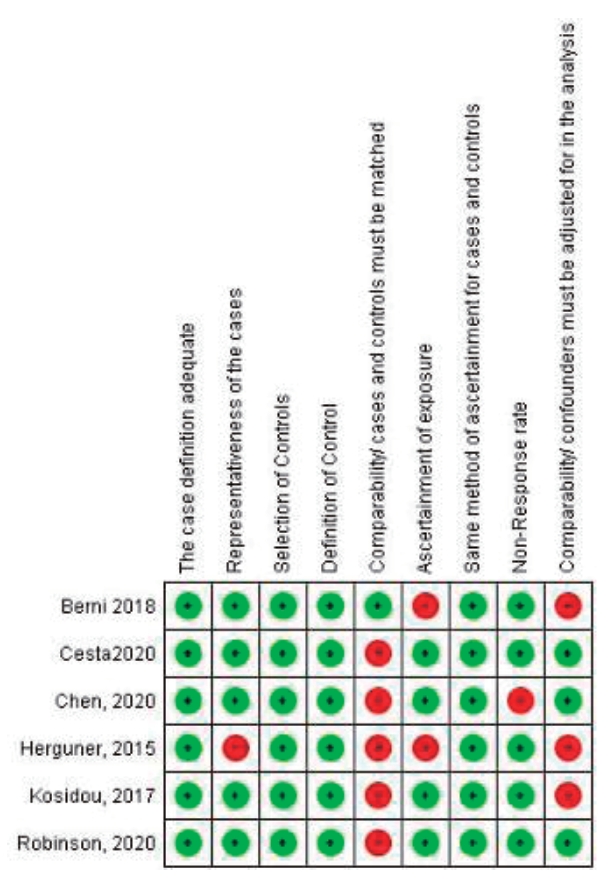
Question: Have polycystic ovary syndrome (PCOS) increased risk of having an offspring with attention-deficit/hyperactivity disorder (ADHD)?
Finding: Six articles (3 cohort and 3 case-control studies; 401,413 total ADHD cases) met the study criteria. Maternal PCOS was associated with an increased risk of ADHD in the offspring based on odds ratio (OR) and relative ratio (RR) (OR, 1.42; 95% confidence interval [CI], 1.27–1.57) and (RR, 1.43; 95% CI, 1.35–1.51), respectively.
Meaning: Our study showed that maternal PCOS is a risk factor for ADHD.
- Review Article
- Infection
- Effects of nasopharyngeal microbiota in respiratory infections and allergies
- Hyun Mi Kang, Jin Han Kang
- Clin Exp Pediatr. 2021;64(11):543-551. Published online April 15, 2021
-

· The nasal microbiota varies with age and is shaped by various factors in healthy individuals.
· The pathological condition of the respiratory tract appears to be associated with reduced nasal microbiota biodiversity, while dysbiosis is involved in the pathophysiology of many respiratory diseases, including otitis, sinusitis, allergic diseases, and lower respiratory infections.
- Original Article
- General Pediatrics
- Efficacy of probiotics for managing infantile colic due to their anti-inflammatory properties: a meta-analysis and systematic review
- Reza Shirazinia, Ali Akbar Golabchifar, Mohammad Reza Fazeli
- Clin Exp Pediatr. 2021;64(12):642-651. Published online April 12, 2021
-
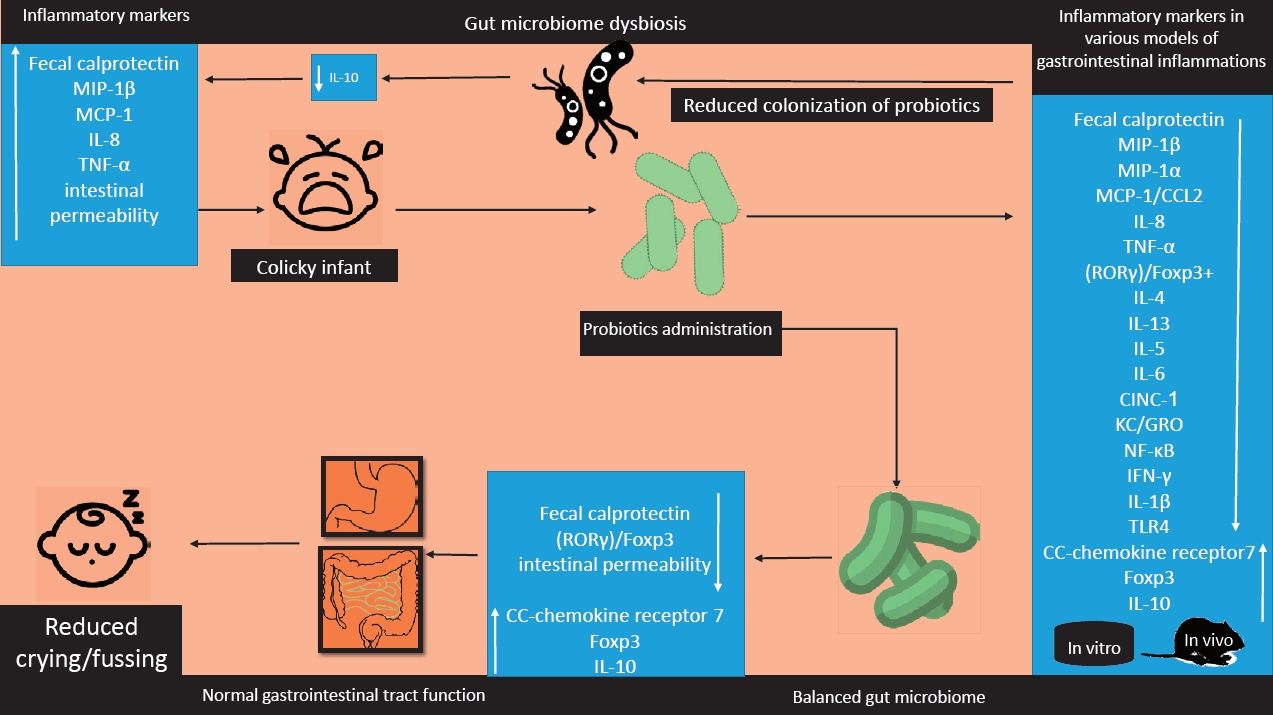
Question: Do probiotics reduce colic symptoms?
Finding: Probiotics reduced colic symptoms in colicky infants probably due to the anti-inflammatory properties.
Meaning: Probiotics may be an effective and less noxious way to manage infantile colic.
- Neonatology (Perinatology)
- Perinatal outcome and possible vertical transmission of coronavirus disease 2019: experience from North India
- Ritu Sharma, Shikha Seth, Rakhee Sharma, Sanju Yadav, Pinky Mishra, Sujaya Mukhopadhyay
- Clin Exp Pediatr. 2021;64(5):239-246. Published online February 16, 2021
-

Question: Is there any risk of vertical transmission of coronavirus disease 2019 (COVID-19), and what is its neonatal profile?
Finding: Biological samples for vertical transmission were negative in all deliveries; however, 2 neonates tested positive for nasopharyngeal COVID-19 reverse transcription-polymerase chain reaction. No significant neonatal morbidity was observed.
Meaning: COVID-19 does not increase adverse neonatal outcomes and shows a negligible risk of vertical transmission; however, horizontal transmission cannot be underestimated.
- Review Article
- Critical Care Medicine
- Pediatric postintensive care syndrome: high burden and a gap in evaluation tools for limited-resource settings
- Chanapai Chaiyakulsil, Rapee Opasatian, Paweethida Tippayawong
- Clin Exp Pediatr. 2021;64(9):436-442. Published online December 18, 2020
-
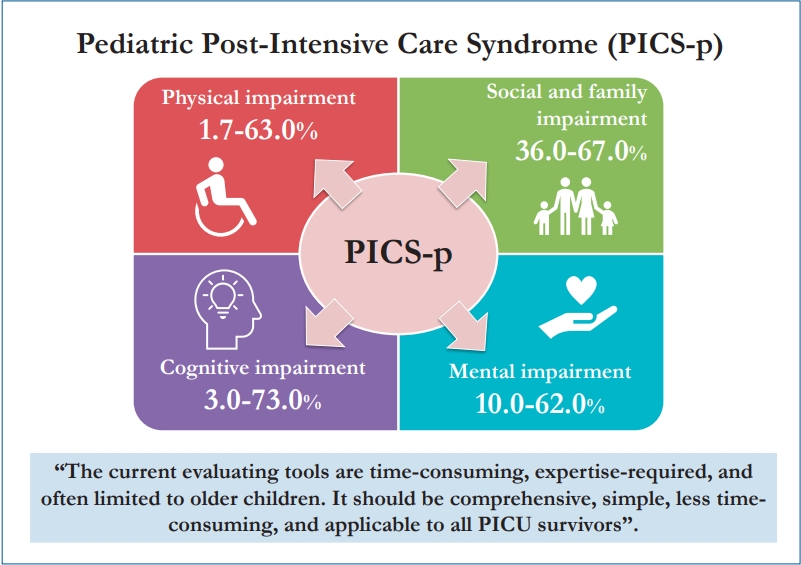
Pediatric postintensive care syndrome has high impact and burden and can affect a child’s life for decades. The early evaluation and detection of such problems require a simple and less time-consuming surveillance tool. Current evaluation tools can be difficult and strenuous for areas with limited resources. Thus, a new simple tool is required for the early detection and intervention of postintensive care syndrome in critically ill children
- Guideline
- Endocrinology
- 2017 Clinical practice guidelines for dyslipidemia of Korean children and adolescents
- Jung Sub Lim, Eun Young Kim, Jae Hyun Kim, Jae-Ho Yoo, Kyung Hee Yi, Hyun Wook Chae, Jin-Ho Choi, Ji Young Kim, Il Tae Hwang; the Committee of Dyslipidemia of Korean Children and Adolescents on behalf of Korean Society of Pediatric Endocrinology (KSPE)
- Clin Exp Pediatr. 2020;63(12):454-462. Published online November 25, 2020
-
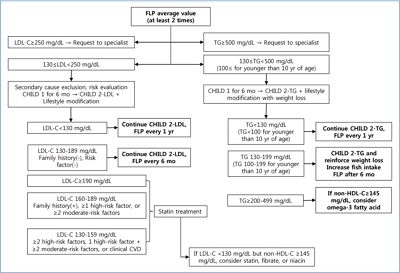
Question: How are children and adolescents with dyslipidemia treated and managed in Korea?
Finding: 2017 guidelines recommend to measure nonfasting non-HDL-C as a screening test and introduce new diet methods: Cardiovascular Health Integrated Lifestyle Diet (CHILD)-1, CHILD-2-low-density lipoprotein cholesterol, and CHILD-2-triglyceride. Statin is the only drug approved in children older than 10 years.
Meaning: New clinical practice guidelines for treating and managing dyslipidemia of Korean children and adolescents are provided.
- Original Article
- Nephrology (Genitourinary)
- Expression profiling of cultured podocytes exposed to nephrotic plasma reveals intrinsic molecular signatures of nephrotic syndrome
- Stuti Panigrahi, Varsha Chhotusing Pardeshi, Karthikeyan Chandrasekaran, Karthik Neelakandan, Hari PS, Anil Vasudevan
- Clin Exp Pediatr. 2021;64(7):355-363. Published online November 1, 2020
-
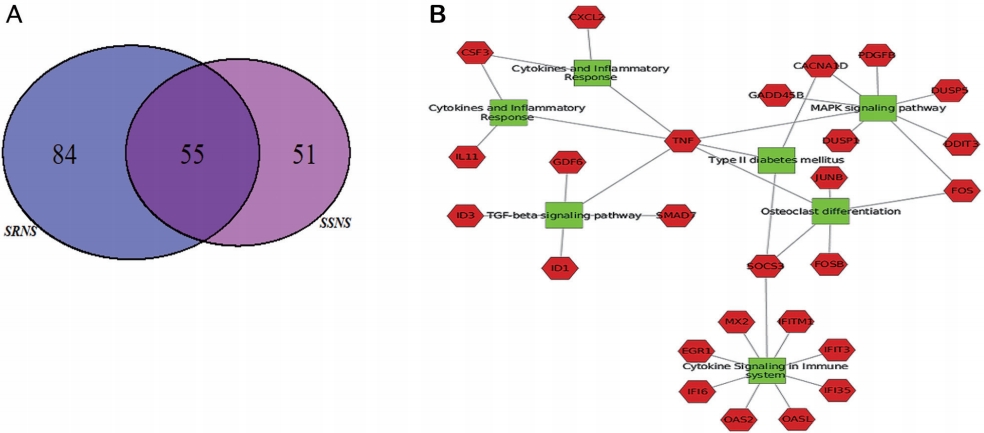
Question: Is it possible to classify nephrotic syndrome (NS) through gene expression profiling of podocytes exposed to NS plasma?
Finding: Our data showed different expression profiles in podocytes exposed to nephrotic plasma from different clinical groups, suggesting the molecular stratification of patients into intrinsic subtypes.
Meaning: Transcriptome profiling of podocytes treated with NS plasma can stratify patients into intrinsic subtypes and provide insight into the molecular mechanisms of podocyte injury.
- Review Article
- Neurology
- Myths and truths about pediatric psychogenic nonepileptic seizures
- Jung Sook Yeom, Heather Bernard, Sookyong Koh
- Clin Exp Pediatr. 2021;64(6):251-259. Published online October 17, 2020
-
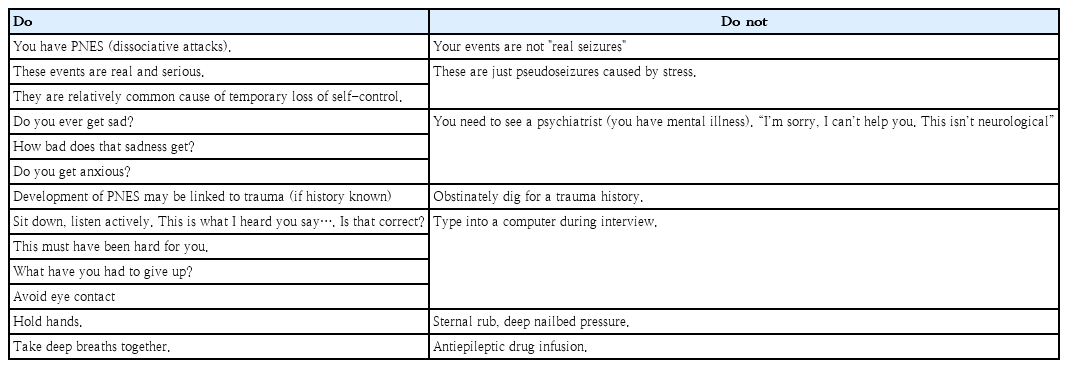
• Psychogenic non-epileptic seizures (PNES) are events that look like epileptic seizures but are not caused by abnormal electrical discharges.
• PNES are a manifestation of psychological and emotional distress.
• Treatment for PNES does not begin with the psychological intervention but starts with the diagnosis and how the diagnosis is delivered.
• A multifactorial biopsychosocial process and a neurobiological review are both essential components when treating PNES
- Original Article
- Infection
- Febrile urinary tract infection in children: changes in epidemiology, etiology, and antibiotic resistance patterns over a decade
- Woosuck Suh, Bi Na Kim, Hyun Mi Kang, Eun Ae Yang, Jung-Woo Rhim, Kyung-Yil Lee
- Clin Exp Pediatr. 2021;64(6):293-300. Published online October 14, 2020
-

Question: How has the antibiotic susceptibility of urinary pathogens changed and what does it imply?
Finding: A yearly increase in multidrug-resistant and extended-spectrum β-lactamase (ESBL)–producing pathogens was observed. A higher recurrence rate was observed in cases of febrile urinary tract infection caused by ESBL producers in patients with underlying vesicoureteral reflux (VUR).
Meaning: The initial empirical antibiotic should reflect the changing susceptibility patterns and underlying VUR status.
- Review Article
- Neurology
- Is it really a seizure? The challenge of paroxysmal nonepileptic events in young infants
- Seung Yeon Jung, Joon Won Kang
- Clin Exp Pediatr. 2021;64(8):384-392. Published online September 18, 2020
-

Paroxysmal nonepileptic events (PNE) comprise of a variety of nonepileptic behaviors and are divided into various types. A more accurate diagnosis is possible by examining the video clip provided by the caregiver. In infants, physiologic PNE accounts for the majority of the PNE. It is important to exclude epilepsy, for which blood tests, electroencephalography, and imaging tests can facilitate differential...
- Critical Care Medicine
- The use of extracorporeal membrane oxygenation in children with acute fulminant myocarditis
- Silver Heinsar, Sainath Raman, Jacky Y. Suen, Hwa Jin Cho, John F. Fraser
- Clin Exp Pediatr. 2021;64(5):188-195. Published online August 10, 2020
-
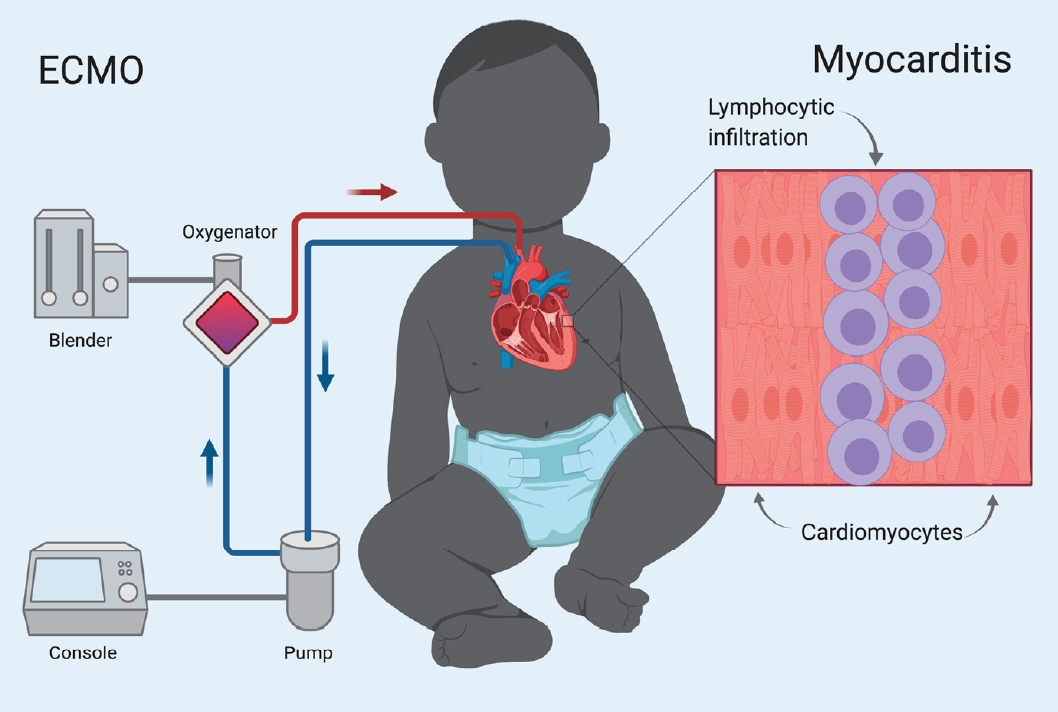
Acute fulminant myocarditis (AFM) occurs as an inflammatory response to an initial myocardial insult. Its rapid and deadly progression calls for prompt diagnosis with aggressive treatment measures. The demonstration of its excellent recovery potential has led to increasing use of mechanical circulatory support, especially extracorporeal membrane oxygenation (ECMO). Arrhythmias, organ failure, elevated cardiac biomarkers, and decreased ventricular function at presentation...
- Original Article
- Other
- Association between pesticide and polychlorinated biphenyl exposure during pregnancy and autism spectrum disorder among children: a meta-analysis
- Fereshteh Mehri, Saeid Bashirian, Salman khazaei, Ensiyeh Jenabi
- Clin Exp Pediatr. 2021;64(6):286-292. Published online July 27, 2020
-

· This meta-analysis analyzed the association between pesticide and polychlorinated biphenyl (PCB) exposure during pregnancy and autism spectrum disorders (ASD) risk among children.
· A significant association was noted between PCB and pesticide exposure during pregnancy and ASD risk among children (odds ratio [OR], 1.80; 95% confidence interval [CI], 1.26–2.34 and OR, 1.20; 95% CI, 1.02–1.39), respectively.
· Pesticide and PCB exposure during pregnancy may affect ASD risk among children.
- Review Article
- Immunology
- Immunopathogenesis of COVID-19 and early immunomodulators
- Kyung-Yil Lee, Jung-Woo Rhim, Jin-Han Kang
- Clin Exp Pediatr. 2020;63(7):239-250. Published online June 18, 2020
-

The novel coronavirus disease 2019 (COVID-19) is spreading globally. Although its etiologic agent is discovered as severe acute respiratory syndrome coronavirus-2 (SARS-CoV-2), there are many unsolved issues in COVID-19 and other infectious diseases. The causes of different clinical phenotypes and incubation periods among individuals, species specificity, and cytokine storm with lymphopenia as well as the mechanism of damage to organ...
- Neurology
- Health effects of electromagnetic fields on children
- Jin-Hwa Moon
- Clin Exp Pediatr. 2020;63(11):422-428. Published online May 26, 2020
-
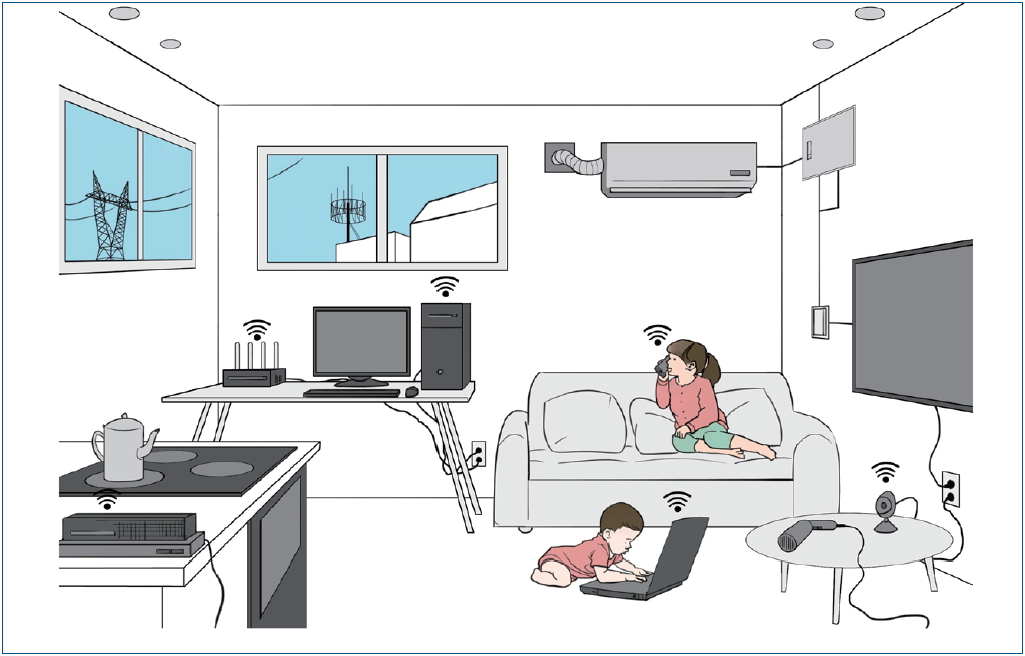
· The nervous systems of children are more vulnerable to the effects of electromagnetic waves than adults.
· The exposure to electromagnetic fields (EMFs) among children should be minimized.
· According to International Agency for Research on Cancer EMFs are possibly carcinogenic, it should not be overlooked or interpreted with bias.
- Myelin oligodendrocyte glycoprotein antibody-associated disorders: clinical spectrum, diagnostic evaluation, and treatment options
- Yun-Jin Lee, Sang Ook Nam, Ara Ko, JuHyun Kong, Shin Yun Byun
- Clin Exp Pediatr. 2021;64(3):103-110. Published online May 14, 2020
-

MOG antibody-associated disorder exhibits different pathophysiological and phenotypic findings than both aquaporin-4 antibody-associated neuromyelitis optica spectrum disorder and typical MS. MOG-antibody is of particular interest in pediatric patients with clinical or radiological non-MS typical findings. MOG-antibody was included in a diagnostic algorithm for children recommending for the first time a standardized use in clinical practice except in cases of typical MS.
- Endocrinology
- Air pollution and childhood obesity
- Moon Young Seo, Shin-Hye Kim, Mi Jung Park
- Clin Exp Pediatr. 2020;63(10):382-388. Published online March 27, 2020
-

Questions: What are the possible effects of air pollution on the occurrence of childhood obesity and what are the mechanisms?
Finding: Epidemiologic studies suggest that air pollutants might act as obesogens in the pediatric population, and their possible mechanisms include oxidative stress, physical inactivity, and epigenetic modulation.
Meaning: This paper reviews updated information on air pollution, one of the modifiable environmental factors in childhood obesity.
- Other
- Comparison of diagnostic and treatment guidelines for undescended testis
- Jaeho Shin, Ga Won Jeon
- Clin Exp Pediatr. 2020;63(11):415-421. Published online March 23, 2020
-
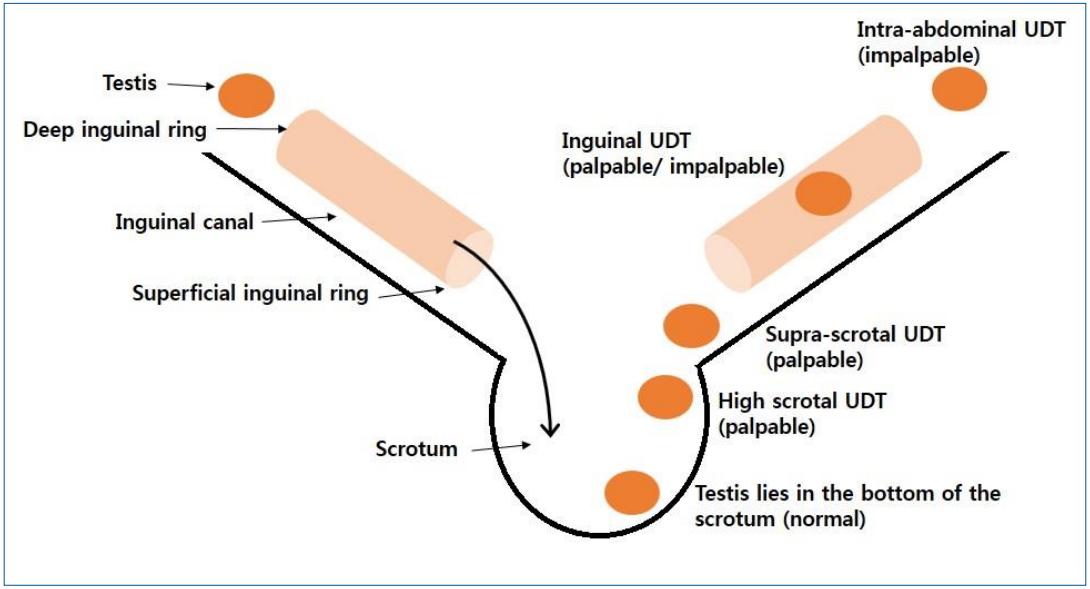
Primary caregivers should consider surgical specialist referral of patients with undescended testis if no descent occurs by 6 months, undescended testis is newly diagnosed after 6 months of age, or testicular torsion is suspected. Orchiopexy is recommended between 6 and 18 months at the latest. The original location of the testes and the age at orchiopexy are predictive factors for infertility and malignancy later in life.
- Neurology
- Advanced neuroimaging techniques for evaluating pediatric epilepsy
- Yun Jeong Lee
- Clin Exp Pediatr. 2020;63(3):88-95. Published online February 6, 2020
-

Accurate localization of the seizure onset zone is important for better seizure outcomes and preventing deficits following epilepsy surgery. Recent advances in neuroimaging techniques have increased our understanding of the underlying etiology and improved our ability to noninvasively identify the seizure onset zone. Using epilepsy-specific magnetic resonance imaging (MRI) protocols, structural MRI allows better detection of the seizure onset zone,...
-

-
-
Impact Factor3.2
-
8.02023CiteScore94th percentilePowered by
-









